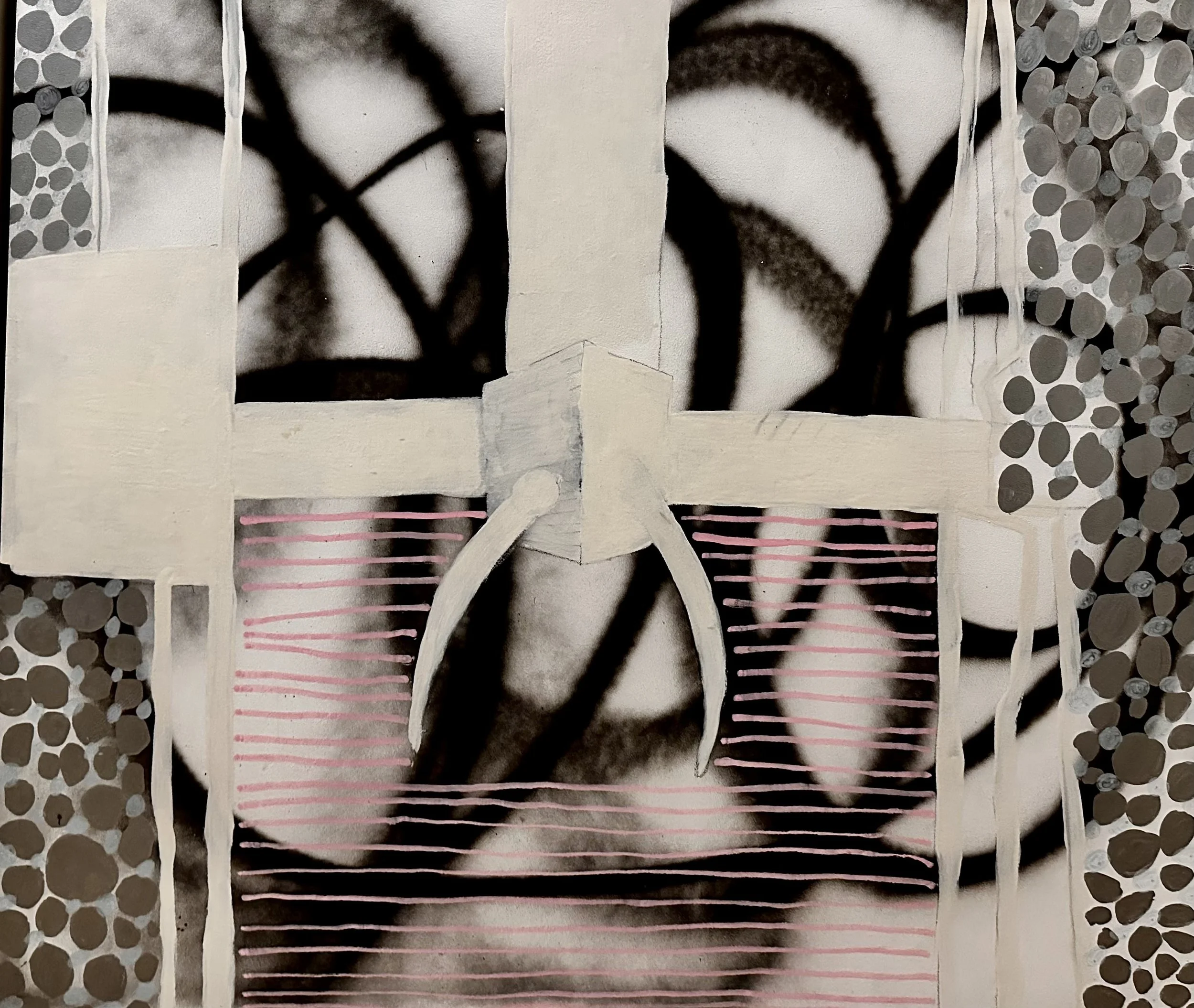NEW PAINTINGS
Don’t Come Gallery, Melbourne, 2009
Artist Statement
This body of work developed in response to the complex experience of returning to Melbourne after several years living and working in Europe. During my time overseas, I was exposed to different ways of thinking and making. I encountered new artistic approaches, worked alongside people from diverse backgrounds, and spent time observing how art functioned in different cultural contexts. Much of what I learned came through everyday experiences—visiting exhibitions, navigating unfamiliar cities, and adapting to environments that challenged my assumptions. Being away gave me space to reflect, but it also made me aware of how much place shapes perspective.
But returning to Melbourne was unexpectedly complex. I had anticipated a sense of comfort, a kind of homecoming that would feel natural and grounding. Instead, I found myself in a state of emotional and cultural dislocation. The city I returned to was not the one I had left. It had changed—subtly in some ways, dramatically in others. And I had changed too. I no longer fit neatly into the rhythms, relationships, or routines that had once defined my life here. I felt like I was hovering between two realities, unable to fully inhabit either.
This sense of being caught between worlds—between the person I had been and the person I was becoming—became the emotional foundation for this series. The paintings are not literal depictions of places or events, but rather internal landscapes shaped by memory, longing, and the search for belonging. They are visual meditations on transition, on the quiet turbulence of returning to a place that no longer feels entirely like home.
In the studio, I found myself reaching for forms, colours, and textures that echoed both my time abroad and my current surroundings. European influences—particularly in architecture, muted palettes, and compositional structure—began to surface in the work, often unconsciously. At the same time, the light, space, and materiality of Melbourne reasserted themselves. The result is a kind of visual dialogue between two geographies, two emotional states, two versions of self. The paintings hold that tension. They do not attempt to resolve it, but rather to dwell within it—to give form to the ambiguity and complexity of in-between-ness.
There is a quiet searching in these works. A desire to reconnect, but also a recognition that reconnection is not always straightforward. I was not simply returning to a previous life; I was arriving as someone new, someone shaped by distance and difference. These paintings became a way to process that evolution—to explore how identity is shaped not just by place, but by movement, by absence, by the spaces we inhabit in between.
The process of making this work was both grounding and unsettling. It required me to sit with discomfort, to acknowledge the parts of myself that felt fragmented or uncertain. But it also offered moments of clarity—glimpses of coherence, of integration, of a new kind of belonging that wasn’t tied to a single place or narrative. Through painting, I began to understand that home is not always a fixed location. Sometimes it is a process, a practice, a way of seeing and being that we carry with us.
Ultimately, this series is about the emotional terrain of return—not as a neat conclusion, but as an ongoing journey. It is about the complexity of identity in flux, the beauty of contradiction, and the quiet resilience required to inhabit the space between. These works are my attempt to make that space visible—to give shape to the invisible threads that connect past and present, here and there, self and other.




